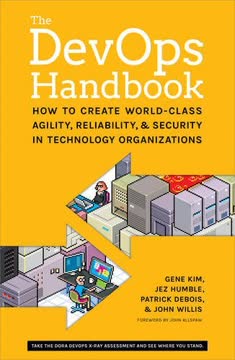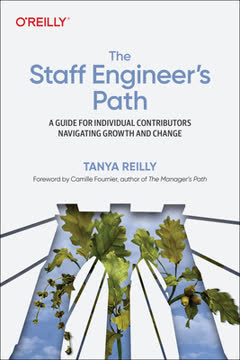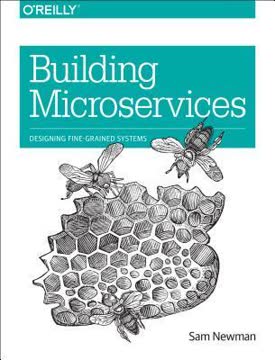つの重要なポイント
1. マイクロサービス: 小さく、自律的なサービスが連携する
マイクロサービスは、小さく、自律的なサービスが連携するものである。
マイクロサービスの基盤。 マイクロサービスアーキテクチャは、小さく独立したサービスのスイートとしてソフトウェアを開発する原則に基づいて構築されている。各サービスは一つのことに特化し、自身のプロセスで動作し、HTTP/REST APIのような軽量なメカニズムを通じて通信する。このアプローチは、モノリシックアーキテクチャと比較して、柔軟性、スケーラビリティ、保守性が向上する。
利点と課題。 マイクロサービスの主な利点には以下が含まれる:
- モジュール性の向上
- 個々のコンポーネントのスケーリングが容易
- 技術の多様性
- フォールトアイソレーションの強化
- デプロイメントサイクルの短縮
しかし、マイクロサービスには以下のような課題もある:
- 運用の複雑さの増加
- 分散システムの問題(例:ネットワーク遅延、フォールトトレランス)
- サービス間のデータ一貫性
2. 進化的アーキテクチャ: 変化する要件への適応
アーキテクトの役割は、大局を見て、このバランスを理解することである。
変化を受け入れる。 進化的アーキテクチャは、システムが時間とともに変化する要件に適応する必要があることを強調する。このアプローチは、すべての将来のニーズを予測することは不可能であると認識し、代わりに進化できる柔軟な基盤を作ることに焦点を当てる。
主要な原則:
- 漸進的な変更:大きな変更を少なくするよりも、小さな変更を頻繁に行う
- 指導された変更:アーキテクチャの決定を導く原則と実践を使用する
- 複数のアーキテクチャ:システムの異なる部分が異なる速度で進化することを認識する
このモデルのアーキテクトは、詳細を指示するのではなく、ガイドラインと制約を設定する都市計画者のような役割を果たす。これにより、チームはローカルな決定を行いながら、全体のシステムの一貫性を保つことができる。
3. サービスのモデリング: 境界とコンテキストの定義
サービスの境界をビジネスの境界に合わせることで、特定の機能のコードがどこにあるかが明確になる。
ドメイン駆動設計。 サービスを効果的にモデリングするには、ビジネスドメインの深い理解が必要である。ドメイン駆動設計(DDD)は、サービスの境界を定義するための貴重な概念を提供する:
- 境界づけられたコンテキスト:明確な境界を持つドメインの領域
- ユビキタス言語:開発者とドメインエキスパートが共有する共通の言語
- アグリゲート:ユニットとして扱われるドメインオブジェクトのクラスター
サービス境界の特定:
- ビジネス能力に合わせる
- データと行動をカプセル化する
- サービス間の依存関係を最小限にする
- チーム構造とコミュニケーションパターンを考慮する
明確に定義された境界は、より一貫性のあるサービスと、独立した開発とデプロイメントを促進する緩やかな結合をもたらす。
4. 統合戦略: 通信のための適切なアプローチの選択
自分が行うことには保守的であり、他者から受け入れることには寛容であれ。
統合の重要性。 効果的な統合は、マイクロサービスがシームレスに連携するために不可欠である。統合技術の選択は、システムの柔軟性、パフォーマンス、保守性に大きな影響を与える。
主要な統合パターン:
- 同期通信:REST、gRPC
- 非同期通信:メッセージキュー、イベントストリーミング
- APIゲートウェイ:リクエストルーティングとコンポジションのため
- サービスメッシュ:サービス間通信の処理
ベストプラクティス:
- 技術に依存しないプロトコル(例:HTTP)を使用する
- 変更を優雅に処理するためのトレラントリーダーを実装する
- サーキットブレーカーやバルクヘッドで障害に備える
- 緩やかな結合のためにイベント駆動アーキテクチャを検討する
適切な統合戦略は、特定のユースケース、パフォーマンス要件、チームの専門知識に依存する。
5. モノリスの分割: マイクロサービスへの移行
モノリスを大理石のブロックと考えよう。全体を爆破することもできるが、それはうまくいかないことが多い。むしろ、少しずつ削り取る方が理にかなっている。
漸進的アプローチ。 モノリシックアーキテクチャからマイクロサービスへの移行は、段階的に行うのが最善である。これにより、チームは学びながら適応し、リスクを最小限に抑えることができる。
モノリスの分割手順:
- 既存のコードベースのシームを特定する
- 境界づけられたコンテキストを別々のモジュールに抽出する
- 共有データ構造とデータベースをリファクタリングする
- モジュール間の通信のためのAPIを作成する
- モジュールを別々のサービスに抽出する
- 新機能をマイクロサービスとして実装する
考慮すべき課題:
- サービス間のデータ依存性
- サービス境界を越えたトランザクションの整合性
- ネットワーク通信のパフォーマンスへの影響
- 複数のサービスを管理する運用の複雑さ
最も簡単でリスクの少ない抽出から始めて、信頼と経験を積んでから、より複雑な部分に取り組む。
6. デプロイメント技術: 信頼性とスケーラビリティの確保
正しいことをするのが難しい場合、それを容易にする努力をすべきである。
自動化されたデプロイメント。 信頼性が高くスケーラブルなデプロイメントは、マイクロサービスの成功に不可欠である。継続的インテグレーション(CI)と継続的デリバリー(CD)の実践は、デプロイメントの複雑さを管理するために重要である。
主要なデプロイメント技術:
- インフラストラクチャー・アズ・コード(IaC)
- コンテナ化(例:Docker)
- オーケストレーションプラットフォーム(例:Kubernetes)
- ブルーグリーンデプロイメント
- カナリアリリース
デプロイメントの考慮事項:
- サービスディスカバリーと構成管理
- 監視とログ管理
- セキュリティとアクセス制御
- データベースの移行とデータの一貫性
ツールと自動化に投資して、デプロイメントをより簡単、迅速、信頼性の高いものにする。これにより、チームは頻繁に自信を持ってデプロイメントを行い、マイクロサービスアーキテクチャの利点を最大限に引き出すことができる。
7. マイクロサービスのテスト: 分散システムにおける品質の維持
動く部品が多いほど、テストは脆弱になり、決定論的でなくなる可能性が高い。
包括的なテスト戦略。 マイクロサービスのテストには、個々のサービスの品質と全体のシステムの動作を確保するための多層的なアプローチが必要である。
マイクロサービスのテストピラミッド:
- ユニットテスト:個々のコンポーネントに対する迅速で焦点を絞ったテスト
- 統合テスト:サービス間の相互作用を検証する
- コントラクトテスト:サービスが合意されたインターフェースを満たしていることを確認する
- エンドツーエンドテスト:システム全体の動作を検証する
テストの課題:
- 分散性による複雑さの増加
- サービス間のテストデータの管理
- 本番環境に近い環境のシミュレーション
- 非同期の相互作用の処理
ユニットテストと統合テストで迅速なフィードバックループを強調し、重要なパスを検証するために慎重に選ばれたエンドツーエンドテストを使用する。コンシューマードリブンコントラクトを使用して、サービス依存関係を効果的に管理することを検討する。
8. 監視とセキュリティ: マイクロサービスの健全性と保護の維持
良いログ管理、特に複数のシステムからのログを集約する能力は、予防ではなく、問題の検出と回復に役立つ。
全体的なアプローチ。 効果的な監視とセキュリティは、健全なマイクロサービスエコシステムを維持するために重要である。これらの側面は、分散システムではより挑戦的で重要になる。
監視のベストプラクティス:
- 中央集権的なログ管理とログ集約
- 分散トレーシング(例:相関IDの使用)
- リアルタイムのアラートとダッシュボード
- アプリケーションパフォーマンスモニタリング(APM)
- 重要なパスの合成監視
セキュリティの考慮事項:
- サービス間の認証と認可
- エッジセキュリティのためのAPIゲートウェイ
- シークレット管理
- ネットワークセグメンテーション
- 定期的なセキュリティ監査とペネトレーションテスト
多層防御戦略を実装し、周辺と個々のサービスの両方を保護する。自動化を使用して、すべてのサービスにわたるセキュリティポリシーの一貫した適用を確保する。
9. コンウェイの法則: 組織とシステム設計の整合
コンウェイの法則は、組織に合わないシステム設計を強制しようとする危険性を強調している。
組織への影響。 コンウェイの法則は、システム設計が組織内のコミュニケーション構造を反映することを示している。この原則は、マイクロサービスアーキテクチャにとって重要な意味を持つ。
チームとサービスの整合:
- ビジネス能力に基づいてチームを編成する
- サービスのエンドツーエンドの所有権をチームに与える
- チーム間の依存関係を最小限にする
- 協力と共有責任の文化を育む
考慮事項:
- チームのサイズと構成
- コミュニケーションパターンとツール
- 意思決定プロセス
- スキル開発と知識共有
組織構造とシステムアーキテクチャが相互に関連していることを認識する。両方を連携して進化させ、マイクロサービスの開発と運用に適した環境を作り出す。
10. マイクロサービスのスケーリング: 成長と障害の処理
スケールにおいて、最高のキットや最も高価なハードウェアを購入しても、障害が発生することを避けることはできない。
スケールと回復力の設計。 マイクロサービスアーキテクチャは、需要の増加と避けられない障害を優雅に処理するように設計されなければならない。
スケーリング戦略:
- 水平スケーリング(インスタンスの追加)
- 垂直スケーリング(インスタンスごとのリソースの増加)
- キャッシング(インメモリ、分散)
- データベースのシャーディングとレプリケーション
- 非同期処理とイベント駆動アーキテクチャ
回復力のパターン:
- カスケード障害を防ぐためのサーキットブレーカー
- フォールトアイソレーションのためのバルクヘッド
- 指数バックオフを伴うタイムアウトとリトライ
- 機能の優雅な劣化
CAP定理の考慮事項:
- 一貫性
- 可用性
- パーティション耐性
分散システムをスケーリングする際には、トレードオフが必要であることを理解する。特定の要件と制約に基づいて優先順位を付ける。観測性とカオスエンジニアリングの実践を導入して、システムの回復力を継続的に向上させる。
最終更新日:
FAQ
What's Building Microservices by Sam Newman about?
- Microservices Architecture: The book explores microservices, which are small, autonomous services that collaborate to form a system. It highlights how this architecture can enhance software delivery speed and flexibility.
- Business Domain Focus: Microservices are modeled around business domains, aligning software design with business needs and avoiding issues of monolithic architectures.
- Practical Guidance: Sam Newman provides real-world examples from companies like Netflix and Amazon, offering a comprehensive guide for adopting or understanding microservices.
Why should I read Building Microservices by Sam Newman?
- Comprehensive Resource: It covers design, development, deployment, testing, and maintenance of microservices, making it ideal for those transitioning from monolithic systems.
- Real-World Examples: The book includes insights from organizations that have successfully implemented microservices, providing practical perspectives and lessons learned.
- Continuous Learning: It encourages embracing continuous learning to keep up with the fast-evolving nature of microservices technology and practices.
What are the key takeaways of Building Microservices by Sam Newman?
- Microservices Benefits: The book outlines benefits like improved scalability, resilience, and quick adoption of new technologies due to service autonomy.
- Loose Coupling and High Cohesion: Emphasizes designing services to be loosely coupled and highly cohesive, facilitating easier maintenance and updates.
- Integration Strategies: Discusses synchronous and asynchronous communication strategies, crucial for maintaining service autonomy and effective collaboration.
What is the definition of microservices according to Building Microservices by Sam Newman?
- Small, Autonomous Services: Defined as "small, autonomous services that work together," highlighting their independence and functionality without reliance on others.
- Business Functionality Focus: Each microservice handles a specific business capability, aligning with organizational goals and prioritizing work effectively.
- Decoupled Communication: Services communicate through well-defined APIs, maintaining loose coupling and enabling independent development and deployment.
How does Building Microservices by Sam Newman suggest modeling services?
- Bounded Contexts: Introduces bounded contexts from Domain-Driven Design to define service boundaries, with each context representing a specific responsibility.
- Loose Coupling and High Cohesion: Stresses that related functionality should reside within the same service, while unrelated functionality should be separated.
- Iterative Approach: Recommends refining service boundaries over time to accommodate changes in business requirements and technology.
What are the integration strategies discussed in Building Microservices by Sam Newman?
- Synchronous vs. Asynchronous: Contrasts synchronous communication, where a service waits for a response, with asynchronous communication, where services operate independently.
- Event-Driven Architecture: Advocates for event-driven architectures, where services emit events to signal state changes, promoting loose coupling.
- REST and RPC: Discusses RESTful APIs and Remote Procedure Calls for service communication, emphasizing technology-agnostic APIs for flexibility.
What are the challenges of deploying microservices as outlined in Building Microservices by Sam Newman?
- Increased Complexity: Warns of the complexity due to interdependencies between services, which can lead to deployment challenges without proper management.
- Continuous Integration and Delivery: Emphasizes robust CI/CD practices to manage microservices effectively, ensuring quick and reliable deployments.
- Monitoring and Management: Suggests comprehensive monitoring solutions to track the health and performance of each service independently.
How does Building Microservices by Sam Newman address testing in microservices?
- Types of Tests: Categorizes tests into technology-facing and business-facing, including unit, integration, and end-to-end tests for service reliability.
- Consumer-Driven Contracts: Introduces consumer-driven contracts to validate service interactions, ensuring changes in one service don't break dependent services.
- Automated Testing: Advocates for automated testing to maintain quality and speed in deployment, allowing confident release of changes.
What is the significance of Conway’s Law in Building Microservices by Sam Newman?
- Organizational Structure and Architecture: Discusses Conway’s Law, which states that system designs reflect the communication structures of organizations.
- Team Autonomy: Emphasizes organizing microservices around autonomous teams that own specific services, fostering accountability and ownership.
- Impact on Design: Highlights the importance of aligning team structures with service boundaries for effective collaboration and faster feature delivery.
What are the best quotes from Building Microservices by Sam Newman and what do they mean?
- Freedom to React: "Microservices give us significantly more freedom to react and make different decisions," highlighting agility compared to monolithic architectures.
- Service Autonomy: "The golden rule: can you make a change to a service and deploy it by itself without changing anything else?" emphasizes designing independent services.
- Postel's Law: "Be conservative in what you do, be liberal in what you accept from others," underscores flexibility in service interactions while maintaining strict internal standards.
What are some architectural safety measures discussed in Building Microservices by Sam Newman?
- Circuit Breakers: Prevent cascading failures by stopping further calls to a failing service, allowing it to recover without being overwhelmed.
- Bulkheads: Isolate different parts of a system to prevent a failure in one area from affecting others, enhancing resilience and stability.
- Timeouts: Setting appropriate timeouts for service calls to avoid hanging requests, ensuring services can fail fast and recover effectively.
How does Building Microservices by Sam Newman suggest handling service discovery?
- Dynamic Service Registries: Discusses using tools like Consul and Eureka for managing service discovery, allowing easy registration and discovery of services.
- DNS as a Solution: Mentions DNS for service discovery, though it may not suit highly dynamic environments, suggesting load balancers to mitigate limitations.
- Human-Friendly Interfaces: Emphasizes creating user-friendly interfaces for service discovery, aiding developers in finding and understanding available services.
レビュー
本書『Building Microservices』は賛否両論を受けている。多くの読者は、マイクロサービスの概念に関する包括的な概要と実践的なアドバイスを称賛している。著者の慎重なアプローチと実際の事例が評価されている一方で、批評家たちは一部のトピックにおける深さの欠如や、マイクロサービスを過度に推奨する可能性を指摘している。初心者には価値があると感じる人が多いが、経験豊富なアーキテクトにはあまり役立たないと感じる人もいる。本書は、設計、デプロイメント、テスト、スケーリングなど、マイクロサービスのさまざまな側面を網羅している。具体的な実装の詳細をもっと知りたいと望む読者もいれば、ソフトウェアアーキテクチャに関する高レベルの視点を評価する読者もいる。
Similar Books














